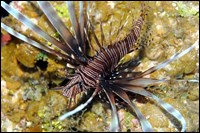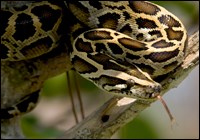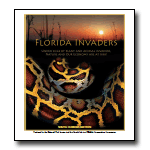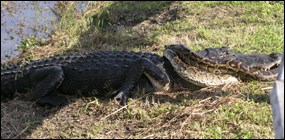
NPS photo Large and small, terrestrial, freshwater, estuarine, and marine -- invasive exotic animal species in a range of different sizes, shapes, and forms have invaded Florida in recent years. Nonnative reptiles, amphibians, birds, mammals, and fresh and salt-water fish species have invaded and now call south Florida home, sometimes at the ecological expense of native animal species, and often at the financial expense of humans. What are native, nonnative, exotic, and invasive species? Exotic species are introduced species, which means that they have been imported from elsewhere by humans. Many exotic species do not present a threat to native species, such as tomatoes and avocados, which are cultivated for the benefit of humans and do not become invasive. Only a small percentage of exotic species become invasive by causing harm to native species, posing a threat to human health and safety, or causing economic damage.
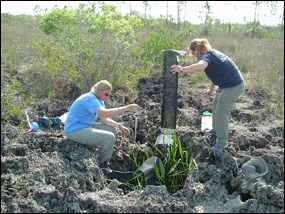
NPS photo Multiple factors promote the success of exotic animal species in south Florida. Humans contribute to the rate of species introduction by unintentional importation on ships and even airplanes, and by intentional importation for the pet trade. Although south Florida is surrounded by water on only three sides, freezing temperatures form an ecological northern boundary, and the resulting tropical island-like conditions account for much of south Florida's susceptibility to exotic animal invasions. The most successful invaders outcompete native species and typically have few biological controls to keep them in check. Learn about the park's invasive animal management tactics at the following links: What Can You Do to Help?
|
Last updated: December 21, 2017

